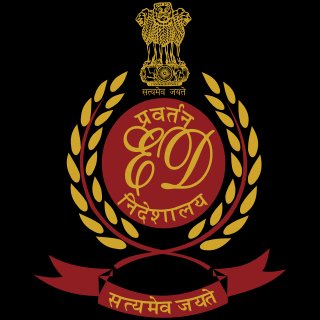ENFORCEMENT DIRECTORATE
ENFORCEMENT DIRECTORATE

WHAT
- Multi-dimensional organisation investigating economic offences under the Prevention of Money Laundering Act (PMLA), Fugitive Economic Offenders Act, Foreign Exchange Management Act and FERA.
- On May 1, 1956 an ‘Enforcement Unit’ was formed in the Department of Economic Affairs, for handling Exchange Control Laws violations under the Foreign Exchange Regulation Act (FERA). It was reframed as Enforcement Directorate
SOURCE OF POWER OF ED
- Prevention of Money Laundering Act was brought in for this exact reason in 2002, but was enacted only in 2005. The objective was to prevent parking of the money outside India and to trace out the layering and the trail of money
- As per PMLA , the ED got its power to investigate under Sections 48 (authorities under act) and 49 (appointment and powers of authorities and other officers)
- If money has been laundered abroad, the PMLA court (constituted as per the Act) has the right to send a letter of rogatory under Section 105 (reciprocal arrangements regarding processes) of the Code of Criminal Procedure
HOW DOES ED WORK
- Whenever any offence is registered by a local police station, which has generated proceeds of crime over and above ₹1 crore, the investigating police officer forwards the details to the ED
- Alternately, if the offence comes under the knowledge of the Central agency, they can then call for the First Information Report (FIR) or the chargesheet if it has been filed directly by police officials
WHAT DIFFERENTIATES THE PROBE BETWEEN THE LOCAL POLICE AND OFFICERS OF THE ED?
Consider the following scenario: If a theft has been committed in a nationalised bank, the local police station will first investigate the crime. If it is learnt that the founder of the bank took all the money and kept it in his house, without being spent or used, then the crime is only theft and the ED won’t interfere because the amount has already been seized. But if the amount which has been stolen is used after four years to purchase some properties, then the ill-gotten money is brought back in the market; or if the money is given to someone else to buy properties in different parts of the country, then there is ‘laundering’ of money and the ED will need to step in and look into the layering and attachment of properties to recover the money.
If jewellery costing ₹1 crore is stolen, police officers will investigate the theft. The ED, however, will attach assets of the accused to recover the amount of ₹1 crore.
OTHER ROLES & FUNCTIONS
- Carries out search (property) and seizure (money/documents) after it has decided that the money has been laundered, under Section 16 (power of survey) and Section 17 (search and seizure) of the PMLA
- Authorities will decide if arrest is needed as per Section 19 (power of arrest) based on search and seizure
- Can directly carry out search and seizure without calling the person for questioning. It is not necessary to summon the person first and then start with the search and seizure.
- If the person is arrested, the ED gets 60 days to file the prosecution complaint (chargesheet) as the punishment under PMLA doesn’t go beyond seven years
- If no one is arrested and only the property is attached, then the prosecution complaint along with attachment order is to be submitted before the adjudicating authority within 60 days

